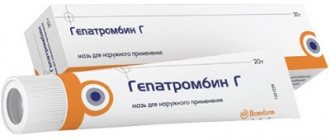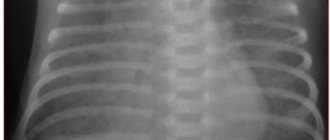What are hemorrhoids
Hemorrhoids (from the Greek haima - “blood”, roe - “flow”) are one of the most common diseases in proctology, which is based on the pathological condition of the cavernous plexuses of the rectum, accompanied by stagnation of blood in them. Hemorrhoids are manifested by periodic bleeding from the nodes, their prolapse from the anal canal and frequent inflammation. Men and women are equally susceptible to hemorrhoids
Classification of hemorrhoids
Internal hemorrhoids. With internal hemorrhoids, there are varicose hemorrhoidal veins, which are located deep in the anal canal, so such hemorrhoids are not visible during a normal examination. In order to see them, you have to resort to special research methods: anoscopy, rectoscopy. Also, such nodes can be identified during digital rectal examination. Such a sign of the disease as prolapse of hemorrhoids can cause bleeding when they are injured during the act of defecation. With significant weakness of the ligamentous apparatus of the rectum, such nodes fall out during defecation or significant straining. In addition, the internal nodes, when they fall out and spasm of the anal sphincter, can be infringed. Most often, the first signs of internal hemorrhoids are bleeding.
External hemorrhoids. In this type of hemorrhoid, the hemorrhoids are marked externally and should not be confused with prolapsed internal hemorrhoids. Most often, external nodes manifest as thrombosis. As a rule, bleeding from external nodes does not occur, since they are not injured during defecation. Such hemorrhoids hurt and cause discomfort during bowel movements. But constant stagnation of blood in them can lead to the formation of blood clots in them. Externally, the external hemorrhoidal node can be of different sizes, from 3 mm or more, which depends on its blood supply. An external hemorrhoid is usually covered by skin, while a prolapsed internal hemorrhoid is usually covered by the mucous membrane of the anal canal.
Combined hemorrhoids. As the name implies, with combined hemorrhoids, the patient has a combination of external and internal hemorrhoids.
The occurrence of hemorrhoids
Normally, all people have external and internal hemorrhoidal venous plexuses under the mucous membrane of the anal canal, which are similar in structure to the cavernous tissue of the genital organs. They play a significant role in retaining intestinal contents, ensuring complete closure of the anal canal when they are filled with blood. As a result of the influence of a number of factors, most adults experience an increase in hemorrhoidal nodes, and hemorrhoids begin to develop.
Factors influencing the development of hemorrhoids: constipation, straining; pregnancy, childbirth; hereditary factors; sedentary lifestyle; prolonged standing or sitting; excessive physical activity; practicing some sports (horse riding, cycling, weightlifting); lifting weights; overweight; hot, spicy food; drinking alcohol; prolonged exposure to heat (sauna, hot bath); prolonged diarrhea (diarrhea).
Causes
This disease belongs to polyetiological pathology. This means that a significant number of different factors lead to its development, which include:
- Hereditary predisposition.
- A prolonged increase in pressure inside the abdominal cavity, leading to a deterioration in the outflow of blood from the veins of the pelvic area, as well as the rectum - this condition develops against the background of chronic constipation, with constant coughing, and systematic excessive stress associated with lifting heavy objects.
- Abuse of fatty, fried foods, smoking, systematic drinking of alcohol - these factors cause weakening of the walls of blood vessels, leading to the formation of pathological protrusions.
- Prolonged stay of a person in a sitting position - representatives of some sedentary professions (drivers, programmers) more often develop this disease, which is associated with blood stagnation.
The combined effect of several factors leads to a more severe course of this disease with the formation of several hemorrhoids inside and outside the anus (combined form).
Treatment methods
The following methods are used in the treatment of hemorrhoids:
| Hemorrhoid stage | Treatment |
| First | Creams, gels, rectal suppositories, drugs, sclerotherapy, photocoagulation, Bicap diathermocoagulation |
| Second | Hardening of nodes, medications, photocoagulation, latex ring ligation, thermal probe, Ultroid current |
| Third | Drug therapy, latex ring ligation, Ultroid current, hemorrhoidectomy |
| Fourth | Hemorrhoidectomy, phlebotropic drugs |
In the early stages of hemorrhoids, traditional medicine using herbs, decoctions and mixtures is also used.
Combined hemorrhoids - symptoms
The main manifestations of this disease are sensations of itching and burning in the rectal area, the appearance of blood impurities in the stool when hemorrhoids are damaged, up to profuse bleeding, prolapse of internal nodes without their reversal inward. There are several degrees of severity of the pathological process:
- 1st degree - characterized by the initial manifestations of the pathological process with a virtual absence of pain, burning, itching, bleeding and small size pathological protrusions.
- Chronic combined hemorrhoids of the 2nd degree - more pronounced clinical symptoms develop against the background of enlargement of hemorrhoids, pain and burning intensify after a person is in a sitting position. When straining, the internal nodes can protrude outward from the anus, then retract on their own. Bleeding appears as small streaks of blood in the stool.
- Chronic combined hemorrhoids of the 3rd degree are a severe course of the pathological process with prolapse of internal nodes without their independent reduction, constant sensations of discomfort, and periodic intense bleeding.
The severe course of this disease is often accompanied by complications in the form of intense bleeding that is difficult to stop, the addition of inflammation of the pathological protrusion, up to the development of a purulent process.
Diagnosis of hemorrhoids
An examination by a coloproctologist involves complex procedures, among which it is worth noting an examination of the rectum. Upon examination, external hemorrhoids can be identified, and by carefully spreading the edges of the external anal sphincter, internal nodes can be identified. Using a digital rectal examination, which should be carried out in all cases, except those when there is an exacerbation of the process, it is possible to establish the presence of compacted hemorrhoids, the tone of the anal sphincter, and identify concomitant diseases of the rectum. To establish that hemorrhoids have come out, the patient is asked to strain. The doctor must also perform a sigmoidoscopy. A thorough examination of the patient allows us to exclude anal fissure, paraproctitis, polyps and rectal cancer.
Chronic combined hemorrhoids - treatment
Depending on the severity of the pathology, the proctologist determines the treatment tactics. With grades 1 and 2 of hemorrhoidal development, conservative therapy with medications is possible. More severe pathology requires radical therapy. The hospital's first surgical department uses various surgical techniques. Surgery for combined hemorrhoids is preferable, which is performed using gentle techniques to achieve minimal trauma to healthy tissue.
Internal hemorrhoids stage 2
The situation is getting worse. Main symptoms of stage 2:
- Bleeding from the anus. If at first there were traces of blood, now it is full-fledged bleeding of a bright scarlet color.
- Loss of nodes means that the disease is advanced. Sometimes you can fix it yourself, but most often you have to see a doctor.
These unpleasant symptoms begin to bother you after physical activity, coughing, sneezing, even at rest. This indicates the advanced stage of the disease.
Diagnostic measures
Anoscopy is a method for diagnosing hemorrhoids.
In the early stages, it is impossible to diagnose this disease yourself. Only an experienced doctor is able to determine the type of disease and its stage. Instrumental methods are used to diagnose internal hemorrhoids:
- Anoscopy - the doctor examines the inner surface of the rectum using a special endoscope. The procedure is performed on an outpatient basis and does not require anesthesia or special preparation - a cleansing enema is sufficient. The doctor has the opportunity to examine 14 cm of the rectum. Contraindication – acute inflammatory process in the anal area.
- Sigmoidoscopy - the procedure is similar to anoscopy, but allows you to examine up to 25 cm of the rectum and colon. At the same time, a tissue biopsy is performed. The procedure is also performed on an outpatient basis, without anesthesia, and is allowed even for preschool children. Contraindication – bleeding from the anus in the active phase.
Preparation for sigmoidoscopy is as follows:
- Gentle diet
- Several sessions of cleansing enemas throughout the day
- Irrigoscopy is an x-ray examination of the rectum and colon using a contrast agent.
- Colonoscopy is used not only for diagnostic purposes, but also for treatment.
- Digital examination - in this case, it is used only for diagnosing nodes located in the immediate vicinity of the anus.
Treatment tactics
Infrared photocoagulation is a procedure for eliminating hemorrhoids.
Treatment of the patient depends on the diagnosis and severity of the disease. Your doctor may suggest the following methods:
- Conservative
- Minimally invasive procedures
- Surgical intervention
The conservative method involves the use of various medications. The best option for internal hemorrhoids is rectal suppositories and tablet forms. NSAIDs, sea buckthorn suppositories, and belladonna suppositories are used as local treatment. For oral administration, venotonics are prescribed - Detralex, Phlebodia and similar drugs. Minimally invasive procedures for internal hemorrhoids:
- Infrared photocoagulation is the effect of light quanta on the affected area. The nodes shrink and dry out.
- The procedure is performed on an outpatient basis. The disadvantage of this method is the likelihood of blood clots forming at the treatment site.
- Ligation with special latex rings. An anoscope is used for this procedure. It's simple - the nodes are pulled together in rings, blood circulation is disrupted and the tumor dies. The intervention, although effective, is quite painful. During 1 visit to the doctor, only 1 node is processed.
Other methods - laser coagulation, cryodestruction - similar photocoagulation are carried out according to indications and at the choice of the attending physician.
Tips to ease hemorrhoids
Preventing hemorrhoids is easier than curing them. Preventive measures are simple and accessible to everyone. Persons with a hereditary predisposition should maintain rectal hygiene. This will strengthen venous tone and prevent inflammatory complications. You should follow a diet. Spicy food has an irritating effect on the rectal mucosa, which increases the permeability of the vascular wall and creates conditions for the development of edema. Gentle food promotes venous vascular tone and prevents the formation of nodes. Heavy lifting and constipation should be avoided. An increase in intra-abdominal pressure contributes to the protrusion of hemorrhoids. These tips and regular medical checkups will help you avoid developing hemorrhoids.
Hemorrhoids in men
Hemorrhoids occur slightly more often in men than in women. The reason for this is the lack of attention on the part of the stronger sex to their health. They see a doctor in the later stages of the disease. The causes of hemorrhoids in men are as follows:
- work with a predominance of heavy physical labor, heavy lifting;
- sedentary work;
- presence of bad habits: alcohol abuse, smoking;
- nutritional obesity;
- neglecting the need to regularly empty the intestines;
- prolongation of the act of defecation;
- chronic stress.
The causes of secondary hemorrhoids are somatic diseases: oncological processes, portal hypertension, heart failure.
Hemorrhoids in women
Contrary to popular belief that men are more likely to suffer from hemorrhoids, they often occur in women as well. Predisposition to the disease is inherited, and its occurrence is also determined by the patient’s lifestyle. In patients it often occurs for the following reasons:
- constipation;
- passive lifestyle;
- pregnancy;
- as a complication during childbirth;
- due to vascular pathologies.
Hemorrhoids in women occur due to pathologies in the pelvic cavity, digestive disorders and tumors.
Stages of hemorrhoids
There are 4 stages of hemorrhoidal disease:
- At the first stage, the symptoms of hemorrhoids, as a rule, are not so pronounced; they can occur periodically, for example, after hypothermia or after lifting heavy objects. Patients note discomfort and minor pain in the rectum, itching, a feeling of incomplete bowel movement, and occasionally the appearance of traces of blood on toilet paper after defecation. Hemorrhoids at this stage do not fall out and are located inside the rectum. It is at the first stage that this disease is easy to cure, but, unfortunately, patients rarely turn to a proctologist with such symptoms.
- At the next stage, these symptoms intensify. Hemorrhoids increase in size and feel like the presence of a foreign body in the rectum. Moreover, they may fall out during bowel movements. Bloody discharge becomes more abundant.
- The third stage is characterized by the fact that hemorrhoids fall out of the rectum with the slightest straining or straining and cannot be reduced on their own. Pain and bleeding become pronounced.
- At the fourth stage, the size of the hemorrhoids no longer interferes with the normal process of defecation, they constantly hurt and bleed.
Third stage clinic – external hemorrhoids
Inflamed nodes in the third stage of hemorrhoids are located due to their prolapse already at the exit of the anal canal. The hemorrhoid is often reduced only by hand, and the bleeding becomes profuse. Inflammation brings severe suffering to the patient with pain and frequent burning. The nodes are located like on a dial: at 3, 7 and 11 o'clock. The nodes can be detected both in the knee-elbow position and in the supine position - on the side with the knees brought to the stomach. Strangulated nodes are considered sources of microthrombosis of the vascular system of the pelvis. The third stage requires qualified treatment from a proctologist-surgeon.
Diagnosis and treatment of hemorrhoids
A proctologist treats hemorrhoids. At the first sessions, he uses digital examination to assess the condition of the hemorrhoids, anus, and perianal area. If in doubt, the doctor refers the patient to a rectal ultrasound or sigmoidoscopy.
Based on the results of research and analysis, the stage of the disease is determined and a suitable therapeutic course is selected:
- At the first stage, medications are prescribed in combination with suppositories and ointments. This treatment helps stabilize blood supply, as well as relieve inflammation and swelling. However, although the patient is practically no longer bothered by pain and itching, the disease itself does not go away.
- At the second stage, sclerotherapy, photocoagulation and other minimally invasive procedures are used. Today, there is a growing demand for ligation - a procedure in which the proctologist tightens the hemorrhoid with a latex ring. Blood circulation to the affected area is disrupted, and after about a week the cavernous plexus dies and is excreted from the body along with feces.
- The third stage is the period of “hybrid war” with the disease, when, along with minimally invasive procedures, surgical methods are used, in particular hemorrhoidectomy (both open and closed).
- If hemorrhoids have reached the fourth stage, the only correct solution is surgical intervention - excision of the affected tissue using the Milligan-Morgan, Ferguson or Parks methods.
No matter what type of treatment you require, medical proctologists will be happy to help. In our work, we use Italian equipment along with modern treatment methods, and therefore we guarantee not only a positive result, but also quick rehabilitation. You can make an appointment by calling the number listed on the website or using the feedback form.









